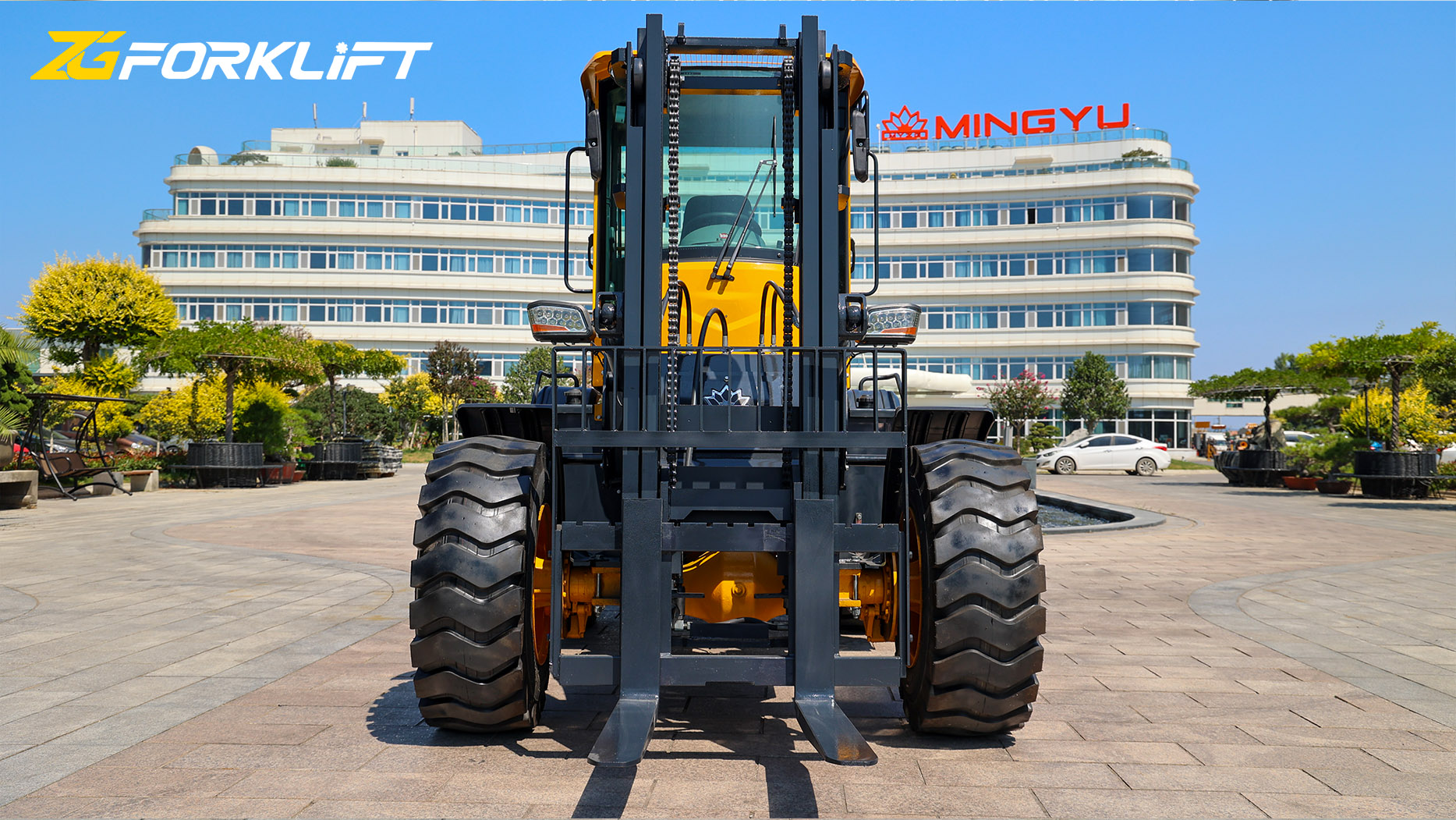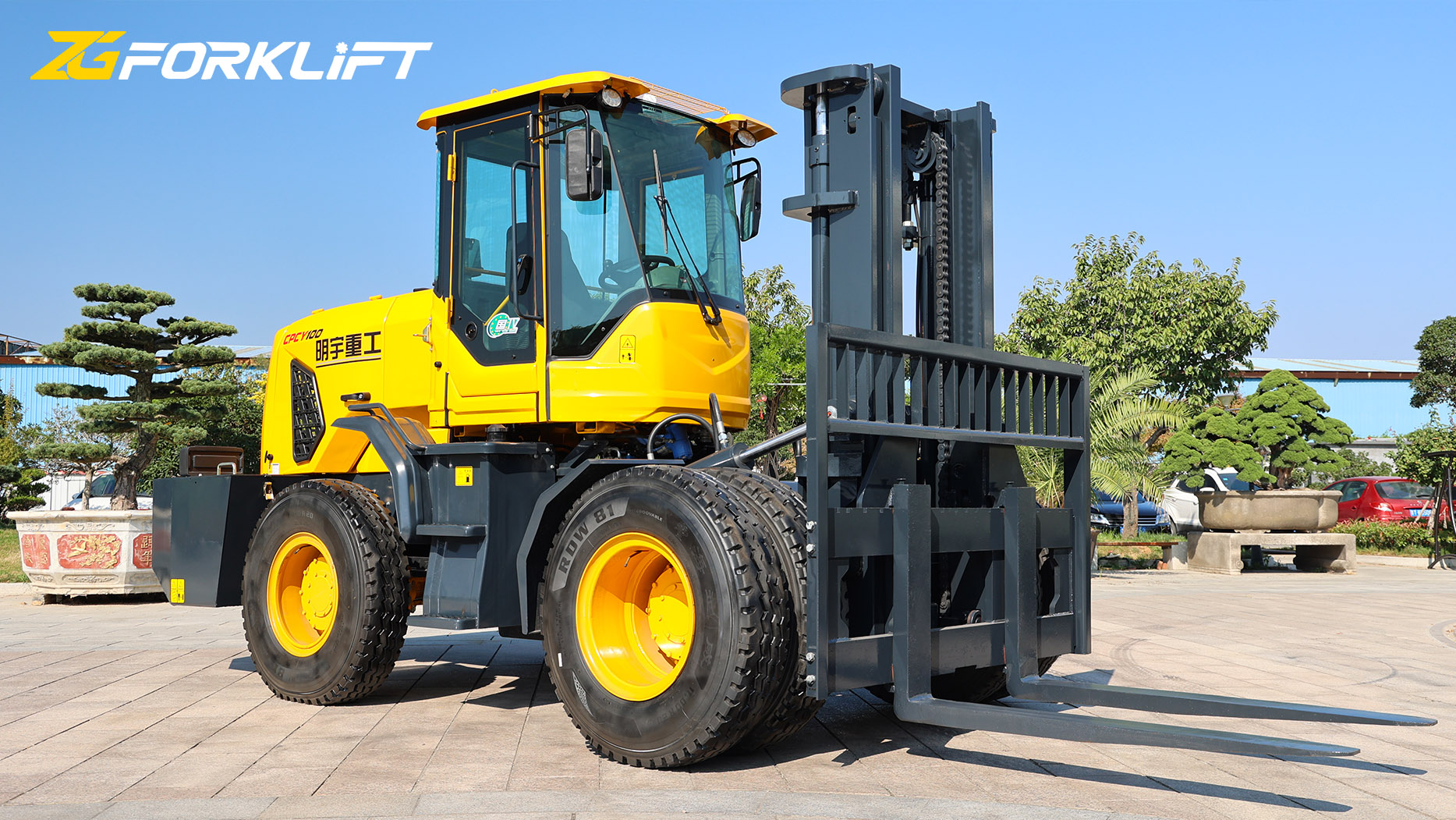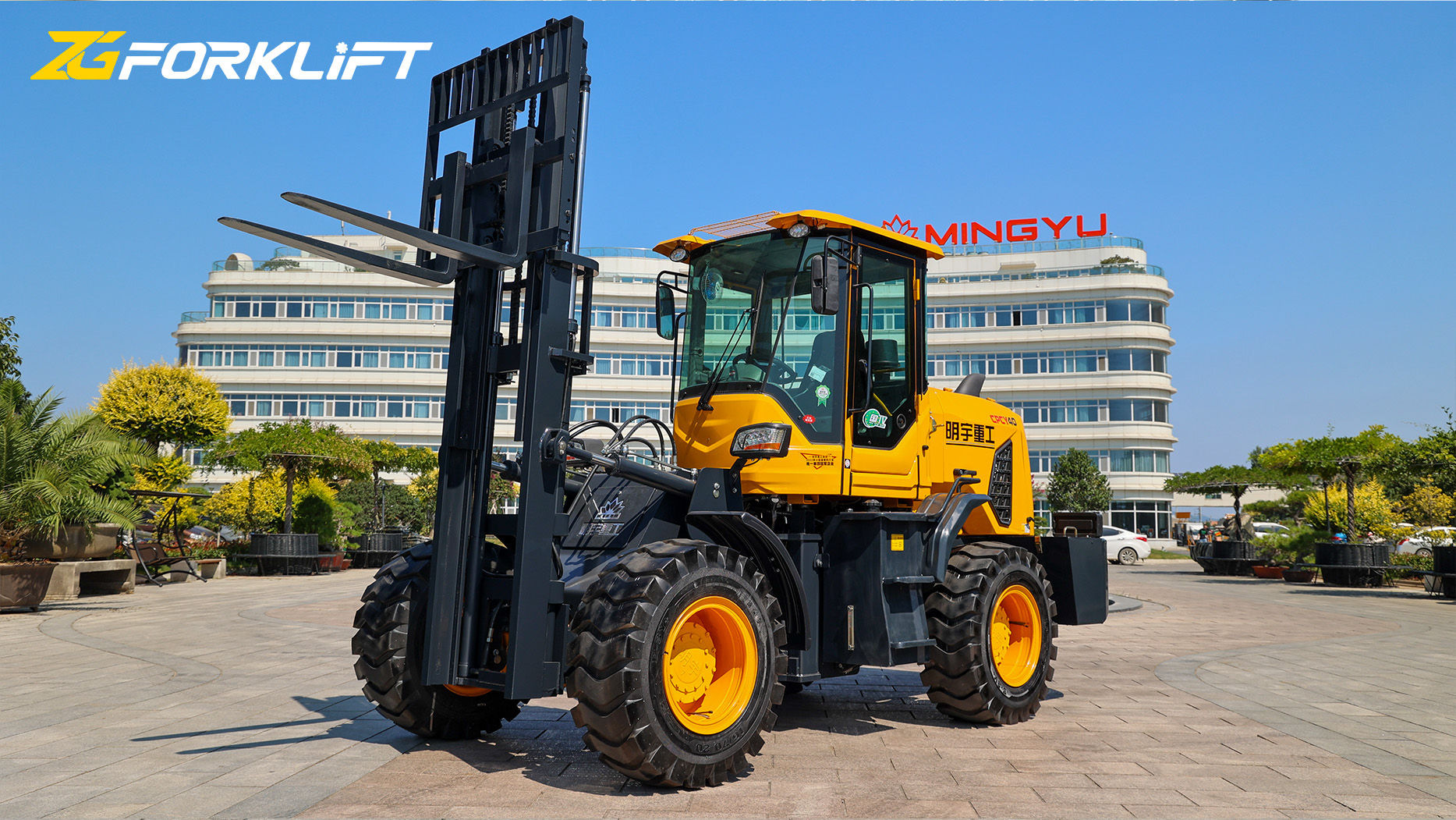Introduction
Forklifts are indispensable tools in various industries, from warehousing and manufacturing to construction and agriculture. While standard forklifts excel in controlled indoor environments, navigating challenging outdoor terrains requires a specialized machine. This article delves into the specific type of forklift designed for off-road operations, exploring its unique characteristics, applications, and key considerations.
Defining the "Off-Road" Forklift
The most common term for an off-road forklift is a Rough Terrain Forklift. This classification emphasizes its primary design characteristic: the ability to operate effectively on uneven, unpaved surfaces.
Key Features of Rough Terrain Forklifts
Robust Construction:
Heavy-Duty Frame: Constructed from high-strength steel to withstand the stresses of navigating rough terrain and heavy loads.
Powerful Engine: Typically diesel-powered, offering the torque and power necessary to overcome obstacles and maintain traction.
Reinforced Components: Vital components like axles, transmissions, and hydraulic systems are designed for durability and resistance to shock loads.
Specialized Tires:
Large, Pneumatic Tires: Provide excellent ground clearance and traction on uneven surfaces like mud, sand, gravel, and rocky terrain.
Aggressive Tread Patterns: Enhance grip and prevent slippage, even on steep inclines and declines.
Enhanced Maneuverability:
Articulated Steering: Allows for tight turns and improved maneuverability in confined spaces, essential for navigating obstacles and working in tight quarters.
Four-Wheel Drive (4WD): Provides superior traction and stability, enabling the forklift to navigate challenging inclines and slippery surfaces.
Operator Comfort and Safety:
Rollover Protection Structure (ROPS): Provides a protective enclosure to shield the operator from falling objects and in the event of a rollover.
Comfortable Cab: Reduces operator fatigue and improves productivity during extended shifts.
Ergonomic Controls: Ensure ease of operation and reduce operator strain.
Applications of Rough Terrain Forklifts
The versatility of rough terrain forklifts makes them indispensable in a wide range of industries and applications:
Construction:
Moving building materials (bricks, lumber, concrete blocks)
Loading and unloading trucks on uneven ground
Agriculture:
Loading and unloading livestock feed and supplies
Moving and stacking bales of hay or other agricultural products
Working in orchards and vineyards
Forestry:
Transporting logs and timber
Handling heavy machinery used in logging operations
Mining:
Moving materials within the mine site
Loading and unloading ore and other materials
Waste Management:
Handling waste materials in landfills and recycling centers
Operating in confined spaces and challenging terrain
Types of Rough Terrain Forklifts
While the term "rough terrain forklift" encompasses a broad category, there are several specific types, each with unique features and capabilities:
Standard Rough Terrain Forklifts: These are the most common type, offering a balance of power, maneuverability, and lifting capacity.
Telehandlers: These versatile machines combine the lifting capabilities of a forklift with the reach and versatility of a telescopic boom.
Skid Steer Loaders: While not strictly forklifts, skid steers can be equipped with forklift attachments, making them suitable for some off-road material handling tasks.
Choosing the Right Rough Terrain Forklift
Selecting the appropriate rough terrain forklift depends on several factors:
Specific Application: The intended use will dictate the required lifting capacity, reach, and maneuverability.
Terrain Conditions: The type of terrain the forklift will encounter will influence tire selection, ground clearance, and overall durability requirements.
Budget: Rough terrain forklifts can vary significantly in price, so it's crucial to determine a realistic budget before making a purchase.
Safety Considerations
Operator Training: Proper operator training is essential to ensure safe and efficient operation. Training should cover:
Safe operating procedures
Pre-shift inspections
Load stability and weight distribution
Emergency procedures
Maintenance: Regular maintenance is crucial to ensure the forklift remains in safe operating condition. This includes:
Routine inspections
Fluid checks and changes
Tire maintenance
Component repairs and replacements
Conclusion
Rough terrain forklifts are invaluable tools for industries that require material handling capabilities in challenging outdoor environments. Their robust construction, specialized tires, and enhanced maneuverability allow them to navigate uneven terrain and handle heavy loads with ease. By understanding the unique characteristics and applications of these machines, businesses can select the right forklift for their specific needs and ensure safe and efficient operations
Post time:Dec.30.2024



